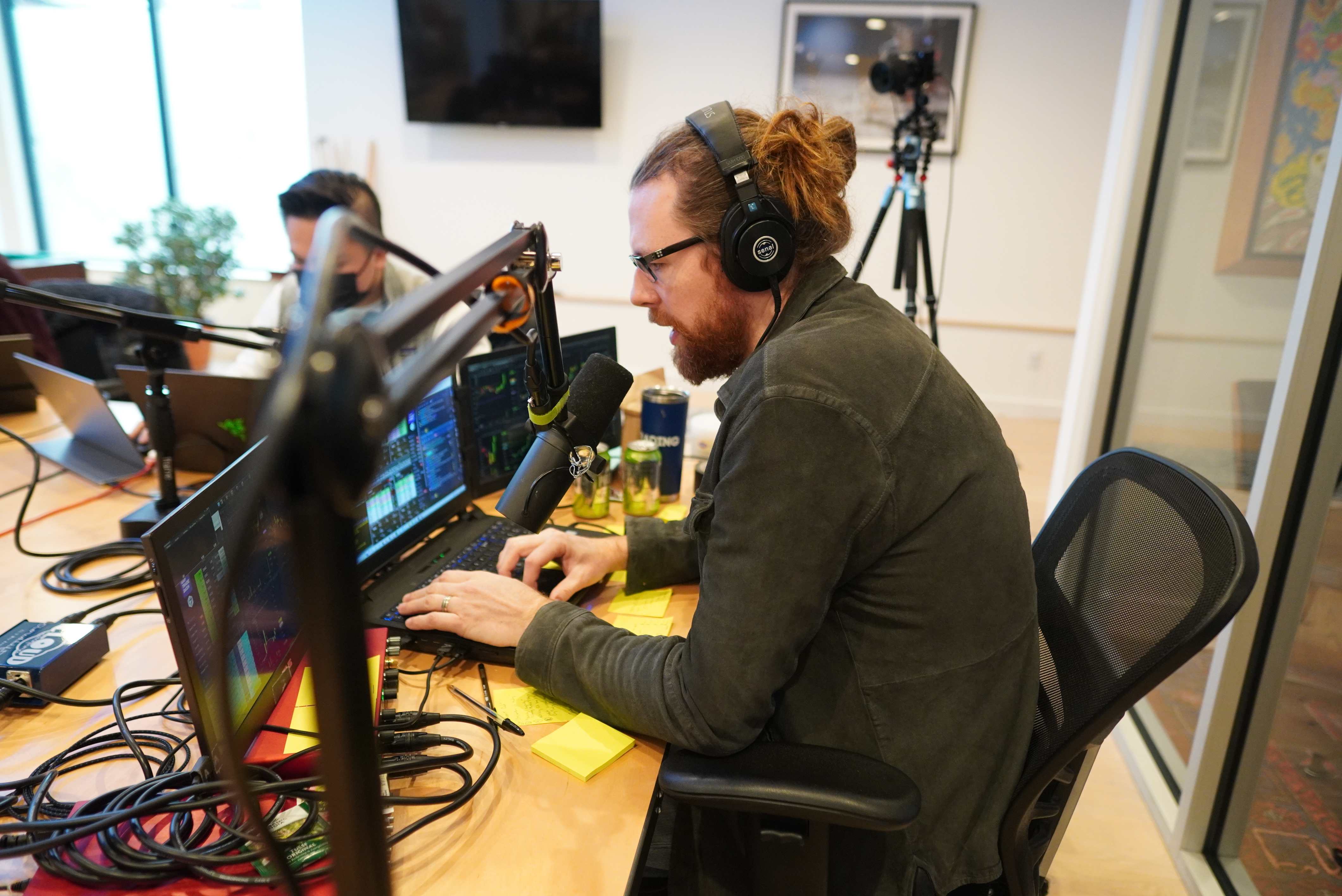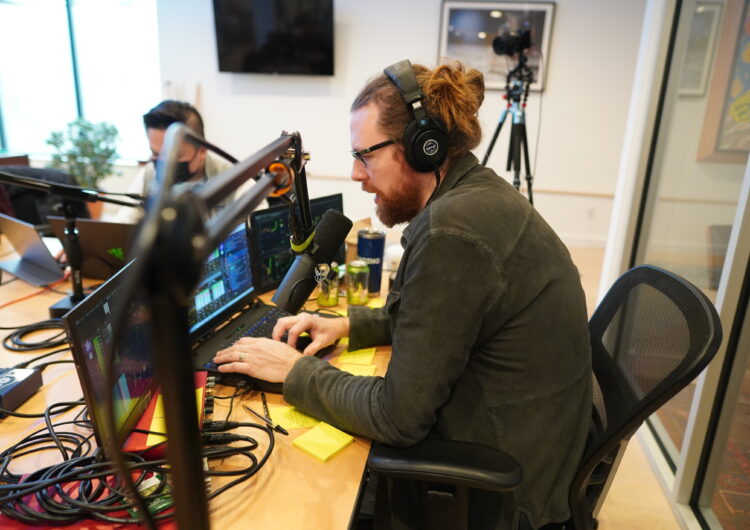
The new book for aspiring day traders uses honesty to dispel myths and discourage anyone looking for overnight success.
By Exec Edge Editorial Staff
The world of day-trading is often perceived as a high-stakes gamble, with sensational stories of overnight millionaires and catastrophic losses dominating the narrative.
However, Ross Cameron, the full-time day trader and founder of Warrior Trading, is on a mission to demystify the art of day-trading and show that there’s more to day-trading thanovernight wealth or abject failure.
In his latest book, “How to Day Trade: The Plain Truth,” Cameron shares the insights and wisdom he’s picked up through over a decade of day-trading, which includes $10 million in fully verified and audited profits.
Cameron’s trading results have been far from typical. In the book he uses first-person narrative and personal stories of his own victories (and defeats) as a day trader. He flashes warning signs and dispenses wisdom for aspiring day traders, with an underlying message: Day-trading is not for everyone – but it can be viable a career path for some. Do you have what it takes?
Separating Fact from Fiction
Day-trading has earned a notorious reputation over the years, largely shaped by stories of inexperienced traders who hit the jackpot by sheer luck or, conversely, lost everything due to ill-informed decisions. These anecdotal extremes have contributed to a common misconception that day-trading is a get-rich-quick scheme. But as Cameron emphasizes, professional day trading is far removed from these myths.
Cameron identifies the various categories of people who offer opinions on day-trading. Some have never traded but base their views on hearsay, while others dabble without a clear strategy, resulting in inconsistent outcomes. Some unfortunate souls have ventured into day-trading, faced losses, but lacked the guidance to understand and rectify their mistakes. Then, there are those who have visibility online, offering courses and services but are not necessarily profitable traders themselves.
Successful day-trading, Cameron argues, isn’t about being a financial wizard but about becoming a keen observer of the markets and the people participating in them. While financial education and mathematical prowess can be helpful, they are not the primary determinants of success. Computers can crunch numbers faster than any human, making mathematical skills less relevant in the era of high-frequency trading.
The Human Element
The heart of day-trading lies in understanding human nature and harnessing it to your advantage. Traders need to decipher the emotions that drive market movements and learn to capitalize on them without falling prey to their own emotional biases.
Cameron’s book underscores that day-trading is not about picking the right stocks based on financial statements; it’s about navigating the tumultuous sea of human emotions in the market.
“Here’s what I’ve come to understand: Day-trading is not about becoming expert at the stocks you will buy and sell,” he writes. “You need to become an observer of investing emotions—both yours and those of the other traders. Learning how the human emotions of fear and greed translate into price action is critical to your ability to profitably trade the markets.”
“When you’re looking at how a stock is behaving on an intraday basis, it’s not the company that is the engine for gains and losses. Sure, the company may have issued a press release about their quarterly earnings, a new revolutionary project, or a bankruptcy. … but contrary to popular belief, it’s not the news stories that change the price of the stock. Changes in stock price are because of changes in supply and demand. Thus, changes in stock price are driven by active traders and high-frequency trading algorithms. A bankruptcy does not cause stocks automatically to change hands. What the news does is affect the emotions of traders, who then act on their fear, greed, suspicions, intuition, pride, and other strong emotions.”
-Excerpt from Cameron’s ”How To Day Trade: The Plain Truth”
So, what does it take to succeed as a day trader? According to Cameron, traditional qualifications and backgrounds are less critical than dedication, discipline, and the willingness to learn. Day-trading demands a significant investment in terms of both time and money. The process involves:

Learning Concepts: Acquiring the essential knowledge and understanding the principles of trading.
Risk Management: Developing a strategy for managing risks, which is pivotal to day-trading success.
Simulated Trading: Before venturing into real markets, aspiring day traders should hone their skills in a simulator to gain experience without risking real money.
Adaptation: Being prepared to adapt and refine strategies when transitioning to real money trading.
Here are 5 tips for discerning whether you are cut out for day-trading or not, based on “How to Day Trade: The Plain Truth.”
Understand the Real Qualifications: Recognize that day-trading isn’t about having a fancy financial background, exceptional intellect, or mathematical prowess. It’s about becoming an expert at human behavior and understanding how emotions like fear and greed impact trading decisions.
Be Willing to Put in the Work: Success in day-trading requires a significant investment of both time and money. You need to be prepared to learn the necessary concepts, develop risk management strategies, and practice in a simulator before trading with real money.
Consider the Emotional Challenges: Day-trading is not just about buying and selling stocks; it’s about managing your own emotions and understanding the emotions of other traders in the market. You need to be capable of staying disciplined and keeping your emotions in check.
Realize the Importance of Risk Management: Recognize that trading isn’t just about making money; it’s also about managing risk. You need to have a well-defined strategy for risk management and be willing to stick to it.
Acknowledge the Long Learning Curve: Understand that day-trading is a long-term learning process. Most people will face setbacks and challenges along the way, and success is not guaranteed. Only a small fraction of aspiring day traders will stick with it until they become competent at trading.
“How to Day Trade: The Plain Truth” is available in hardcover and paperback versions, in addition to audiobook and Kindle. To buy a copy, visit www.thedaytradingbook.com/.
About Ross Cameron
Ross Cameron is a full-time day trader best known for his highly atypical performance of turning a trading account with just $583.15 into over $10 million in fully verified and audited profits. He also has more than a million followers on YouTube.
Ross’s results aren’t typical. In fact, he’s far from the typical trader. This makes his experience and insight in trading that much more interesting for anyone thinking about becoming a day trader.
In “How to Day Trade – The Plain Truth,” Ross talks candidly about how he got started in day-trading: how he studied, experimented, and made lots of mistakes. He describes his challenges⎯some of which are very personal⎯and how he found a path to overcome them.
You’ll feel like you’ve gotten to know Ross as he explains the systems he put in place to trade more effectively and consistently.
Disclaimer
The information provided in this article is for educational and informational purposes only and is not intended as financial advice. The views, thoughts, and opinions expressed represent personal opinions and is based on individual criteria and experience.
Day trading involves substantial risk and is not suitable for every investor. The strategies and equipment discussed in the article are based on personal experiences and are not a guarantee of future success or returns. Readers should be aware that day trading can result in significant financial losses and are encouraged to conduct their own research and consult with a professional financial advisor before making any investment decisions. Past performance is not indicative of future results, and individual results may vary.
Disclosure
This is sponsored content. The sponsorship may include, but is not limited to, payment for article placement to the publication, compensation to the writer for their time, or other arrangements.







